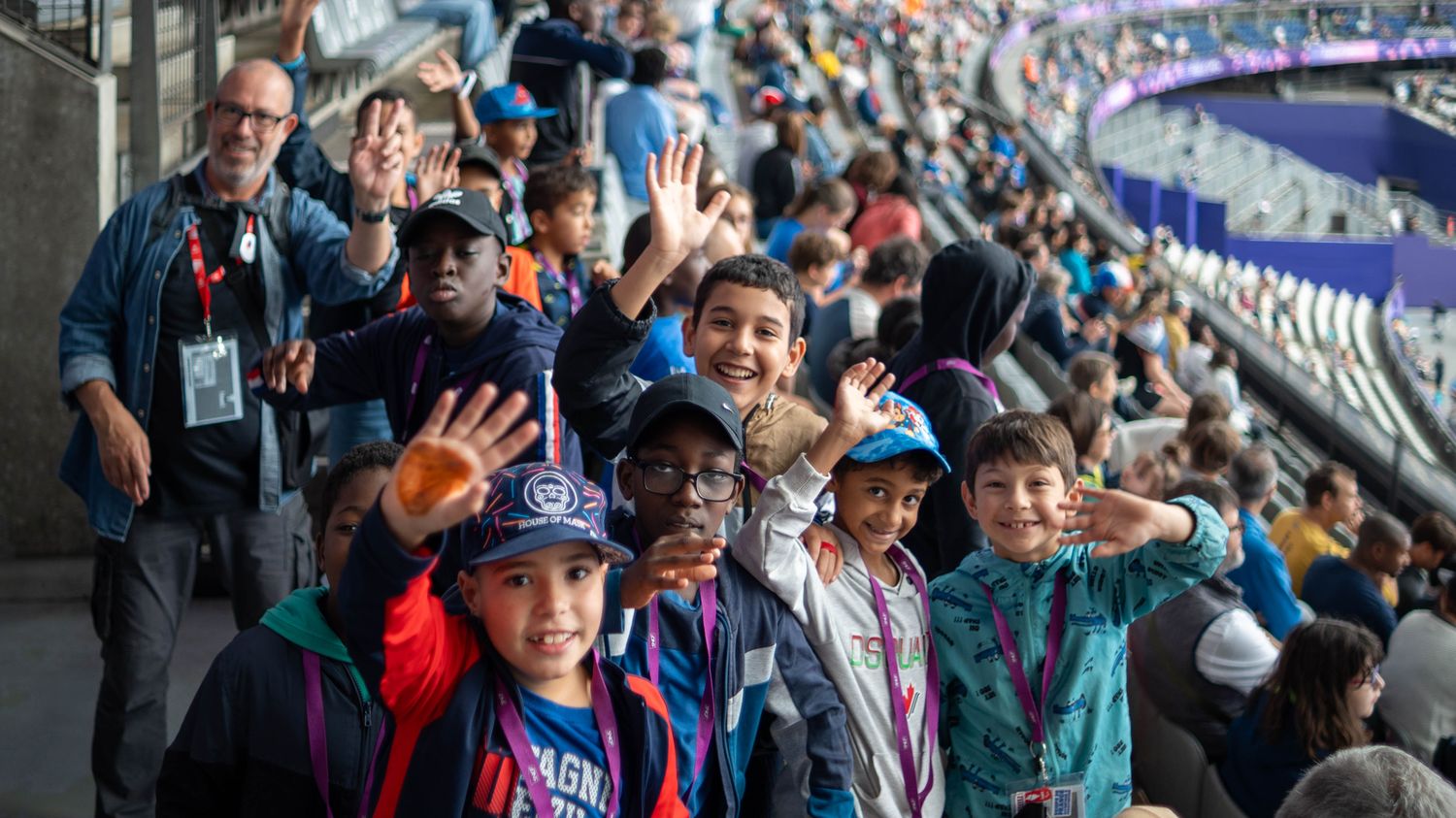Over the course of the Paralympic Games, Secours populaire will enable more than 1,000 people, children and adults, often deprived of leisure activities, to take part in the event by going to the events.

Published
Reading time: 5 min

“For days, they’ve been waiting for nothing more than to go to the Stade de France.” A volunteer at the Secours populaire de la Haute-Vienne, Hervé Allard has under his supervision around thirty children, aged 7 to 11, who have come from priority neighbourhoods in Limoges, on Saturday 31 August, to experience the Paris 2024 Games. The meeting takes place in front of the Stadium, at gate Z. Hervé Allard and Régis Bouyer, social mediator at the Secours populaire de la Haute-Vienne, count and distribute the children according to the number of places.
Excited by the day’s activity, some of these young spectators are getting impatient and hurry to the entrance of the stand to finally discover the heart of the Stade de France. You don’t have to beg them to pose, all smiles, arms in the air, for a souvenir photo. “Come on France”, exclaims a volunteer, positioned behind the photographer, who has improvised as a room driver.
After having carried out the operation during the Olympic Games, the association is repeating the project for the Paralympics. In total, 4 000 children and adults in precarious situations will participate in the event until September 7. On Saturday, there were a total of 150 discovering the Dionysian enclosure, coming from Haute-Vienne, Seine-et-Marne and Seine-Saint-Denis. To make such a system possible, the Secours populaire relied on its private partners at the national and departmental level as well as on the solidarity ticket office. During the general public sales, each buyer had the opportunity to make a donation of two euros when ordering. All the money collected was then donated to the Secours populaire to cover the purchase of tickets as well as travel expenses.

The children’s enthusiasm and joy can be seen on their faces. And for good reason, for many, this is their first time at the Stade de France, “or even in Paris. Some of them had never taken the train before,” emphasizes Régis Bouyer. To complete the stay, the group also visited the Eiffel Tower on Friday after its arrival, “a must” and made a stop at Club France. The aim of this programme is to allow these children to experience the Paris 2024 Games, and to get them excited to the rhythms of the performances of athletes from all over the world. “We also want to show them the values of sport, resilience and inclusion. For many, they come from different cultures, and we want to teach them that we can do lots of things, regardless of the difference,” insists the social mediator, Régis Bouyer.
The Limoges spectators are spoiled on Saturday morning by a particularly rich program, with seven finals out of nine events, including javelin, discus and shot put, 5,000 m and 1,500 m as well as the 400 m heats. So many new disciplines for these youngsters, more accustomed to football fields and boxing rings than to the athletics stadium. “We still had to explain to them the term ‘athletics’ which some of them did not know, specifies Régis Bouyer. We explained to them the events, the different types of handicaps, and how the morning would unfold.” “There you have the throws, and what you hear are the athletes’ presentations,” comments Hervé Allard to a small group of children.

“The stadium is super beautiful and the athletes are very strong. I understood that there were two types of throw, one with a ball (the weight) and another with a stick [le javelot]“, explains proudly Riyad, 8 years old. Despite this briefing, many questions remain throughout the tests. “I don’t always understand when to applaud or not, regrets Jeanne, 9 years old. There’s a lot to see at once, and a lot of noise.” “There you have the medal ceremony for the winners. That’s where they receive their medals,” Pierre answers, to one of Jeanne’s questions. “We studied before coming to answer as many of their questions as possible,” he adds between two questions from the children.

While it is not always easy to keep the attention of children during a three-hour session, the presence of a Tricolore on the track captivates all eyes. When the public exclaims as the runners pass in front of them, the children do the same and follow the pace set by the other spectators. For her part, Selma, 8 years old, has understood everything, and does not want to miss anything, especially not the Frenchman Antoine Praud, whom she quickly identified thanks to his blue, white, red equipment. “All the athletes are very impressive….”, the young girl testifies, before stopping and shouting: “Go! Go! Go !”.
Antoine Praud has just set off on the track and Selma has eyes only for him. The Frenchman also won bronze in the 1,500m, winning the first French medal for para-athletics. Enough to inspire vocations, or at least create desires around the discipline? “Why not, answers Selma, who plays football with her friends. It looks like fun to run on the track.”
